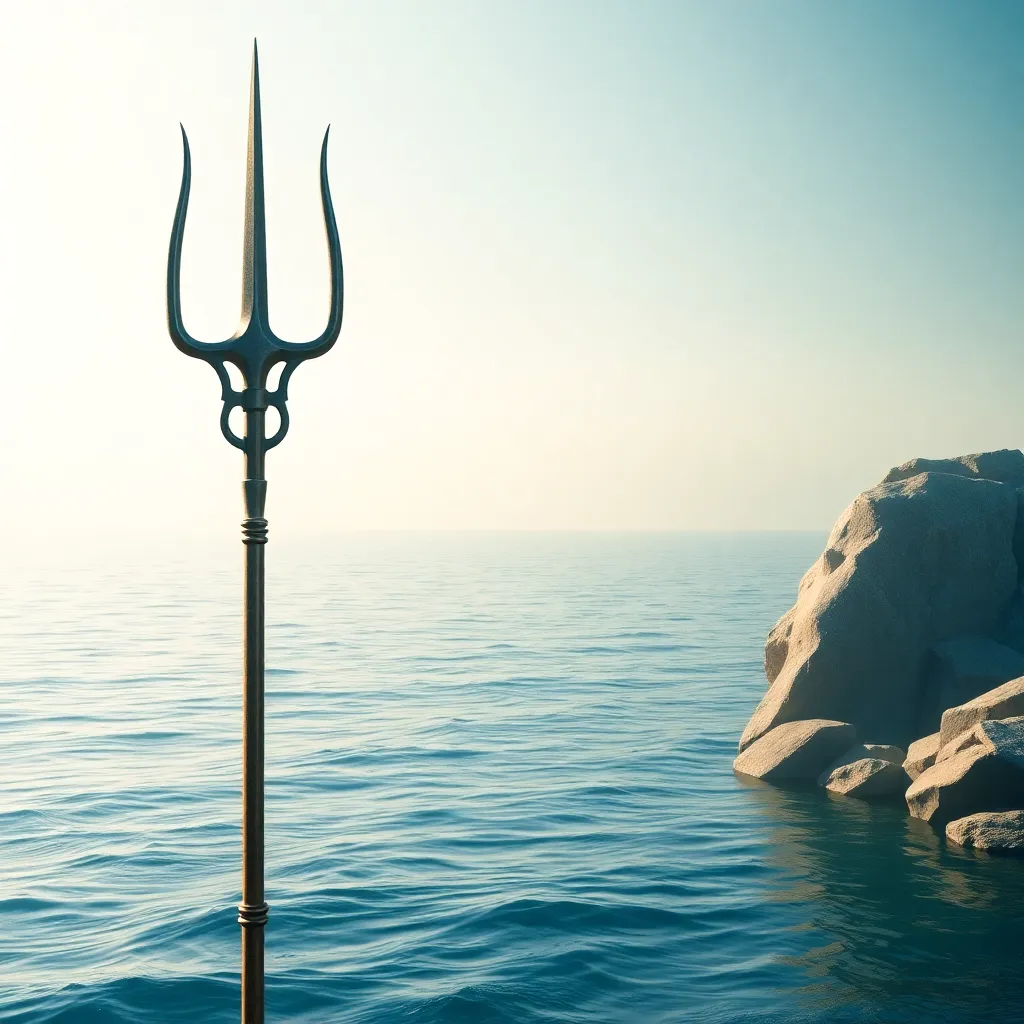The Trident: Poseidon’s Symbol and Its Cultural Significance
I. Introduction
In the pantheon of Greek mythology, Poseidon stands out as one of the most powerful deities. Known as the god of the sea, earthquakes, and horses, Poseidon played a vital role in ancient Greek belief systems and cultural practices. His primary symbol, the trident, is not merely a weapon but a representation of his dominion over the ocean and the natural elements. This article delves into the cultural significance of Poseidon’s trident, exploring its origins, symbolism, and impact across various cultures.
II. The Origins of the Trident
The trident has a rich historical context within ancient Greece, emerging as a key attribute of Poseidon, who was often depicted wielding this three-pronged spear. According to myth, the trident was created by the Cyclopes during the Titanomachy, a great battle between the Titans and the Olympian gods. This legendary tale underscores the trident’s connection to divine power and authority.
In essence, the trident symbolizes:
- Power over the sea
- Control of the forces of nature
- Authority among the gods
III. Symbolism of the Trident in Ancient Greek Culture
The trident served as a powerful emblem of the sea and maritime dominance in ancient Greek culture. As sailors revered Poseidon, they looked to the trident as a sign of protection and guidance during their voyages. Additionally, the trident’s association with earthquakes and storms highlighted its role as a tool of both creation and destruction.
In art and literature, the trident appeared frequently, depicted in:
- Pottery
- Sculpture
- Epic poetry
These artistic representations often illustrated Poseidon’s might, emphasizing his connection to the ocean and his dual nature as both a nurturing and vengeful deity.
IV. The Trident in Roman Mythology
As Greek culture spread, so did the worship of Poseidon, leading to the emergence of his Roman counterpart, Neptune. The adaptation of the trident in Roman mythology mirrored the Greek tradition, with Neptune often depicted holding a similar three-pronged spear.
The cultural exchanges between Greek and Roman interpretations of the trident included:
- Shared iconography and symbolism
- Similar myths and legends
- Maritime significance in Roman society
The trident became an essential symbol in Roman maritime culture, representing naval power and the protection of seafarers.
V. The Trident in Modern Culture
In contemporary society, the trident continues to resonate in various forms of media, including films, literature, and video games. Iconic representations, such as Poseidon in Disney’s “Hercules” or the character of Aquaman in DC Comics, showcase the enduring legacy of the trident.
Moreover, the trident has emerged as a symbol of ocean conservation and environmental movements. Organizations advocating for marine life protection often utilize the trident to convey their mission, reflecting its historical ties to the sea.
Popular culture references to the trident have had a significant impact on public perception, fostering a sense of respect and awe for the ocean and its mysteries.
VI. The Trident in Religious and Spiritual Contexts
The significance of the trident extends beyond Greek and Roman mythology. In Hinduism, the deity Shiva wields a trident known as the “Trishula,” which symbolizes the three aspects of existence: creation, preservation, and destruction. This duality mirrors the attributes associated with Poseidon’s trident.
Furthermore, the trident appears in various cultures and religions worldwide, signifying:
- Power and authority
- Protection and guidance
- Balance in nature
In spiritual practices, the trident serves as a potent symbol of power, representing the wielding of divine energy to achieve harmony and control.
VII. The Artistic Representation of the Trident
Throughout history, the artistic representation of Poseidon and his trident has evolved significantly. Famous artworks, such as sculptures from ancient Greece and Renaissance paintings, often depict the god in dynamic poses, emphasizing the trident’s grandeur.
Some notable artistic representations include:
- Statues of Poseidon in classical architecture
- Paintings illustrating maritime battles
- Modern interpretations in graphic design and fashion
The trident’s artistic depiction has transformed through the ages, remaining a relevant motif in contemporary design and cultural expressions.
VIII. Conclusion
In summary, the trident holds immense significance across cultures and time, representing power, authority, and the mysteries of the sea. From its origins in Greek mythology to its contemporary adaptations, the trident has remained a multifaceted symbol in human history. As we reflect on the enduring legacy of Poseidon’s trident, we are reminded of its ability to inspire awe, respect, and a deeper understanding of our relationship with the ocean and the environment.




